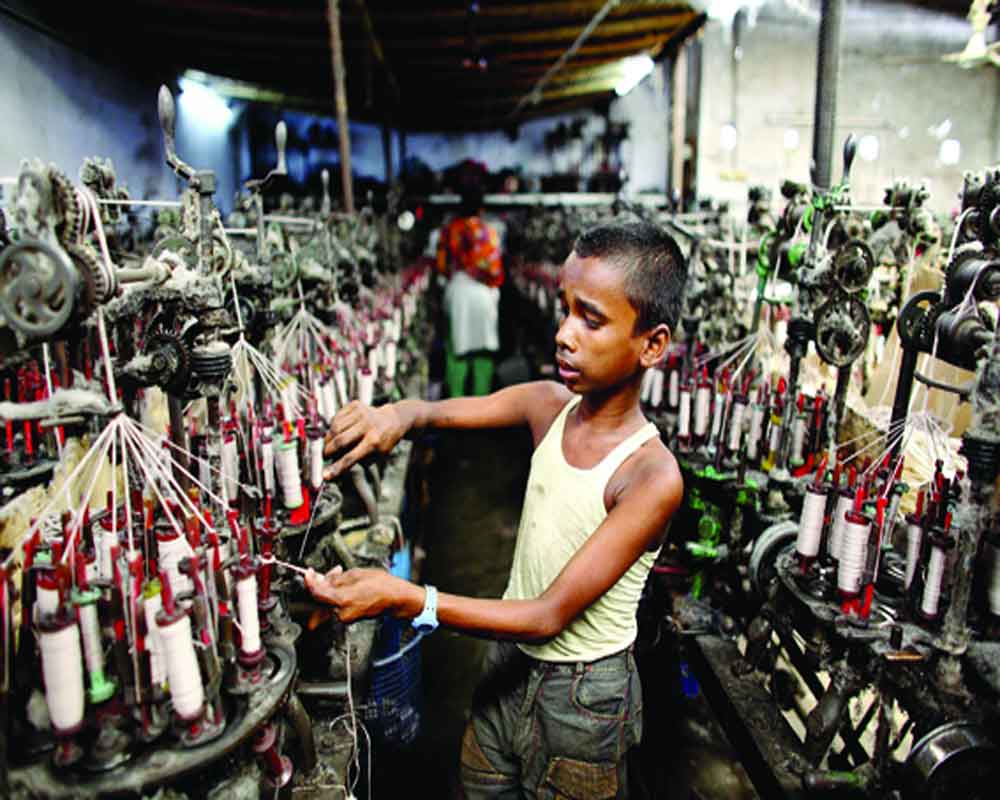Studies by ILO show a significant rise in child labour in India in recent years, mostly driven by the Covid 19 pandemic
It was a bitterly cold winter night. But child activist Kailash Satyarthi and his team hardly felt the chill. The burning determination to rescue bonded labourers, especially children, employed at the stone quarry in Haryana’s Dadri Kalan, helped them ignore the falling temperatures as they waited for the right moment to achieve their goal. Discreet investigations prior to this rescue mission had revealed that the best time to raid the quarry was between 5 and 6 am. It was around this time that the gun-toting guard took an hour-long break and went to his village to freshen up.
As soon as the clock struck five and the guard left, Satyarthi and his team swung into action. They managed to rescue 40 labourers, many of them children. While the adults were helped into the waiting truck, Satyarthi bundled as many children as possible in his car and drove off as fast as he could. While driving, he remembered there were some bananas in the back of the car.
He asked one of the children to distribute them to everyone. To his shock, he realised the children had never seen a banana before when they said they had never seen an onion or potato in this shape before. When he explained the banana was an edible fruit, the children began biting into it without knowing that it had to be peeled first. The sadness that had engulfed Satyarthi on seeing the dire condition of the children lessened when he saw their amazement and happy faces after they finally tasted the banana. Just then, a question by Devli, a small girl sitting closest to him in the car, cut short his sense of relief.
“Why didn’t you come sooner?”This innocent, yet anguished query was to shake him to the core. At once he strengthened his resolve to work even harder to return their stolen childhood. This was going to be a dangerous task and Satyarthi would survive several fatal attacks while carrying out these rescue missions. Thanks to the unrelenting efforts by him, his brave team and field partners, over 15,000 children have been rescued from bonded labour and slavery over the last four decades.
Devli is now married with two children of her own. The education she received at the Ballika Ashram (Home for Girls) run by Satyarthi’s not-for-profit Bachpan Bachao Andolan, not only changed her life but also nurtured her leadership qualities. She began to speak up openly against child labour and became an inspiration for others. In 2009, she was invited to speak on the right to education at the UN General Assembly in New York. After completing her education, she moved back to her village so that she could ensure no child was forced into work or remained bereft of education.
Devli’s stirring journey is among the 12 narrated in Satyarthi’s book on stories of children rescued from slavery aptly titled “Why Didn’t You Come Sooner?” Although it took him 12 years to write, the 2014 Nobel Laureate says these stories have been waiting to be told for much longer. The 270-page book highlights how children are trafficked, physically and sexually abused and forced into child labour.
Whether it is the story of Sabo, a girl rescued from a brick kiln in 1981, or of emaciated Bhavna, who took years to overcome her trauma of being sexually exploited at the circus she was forced to work in, or of little Kalu labouring in rug weaving, their heart-wrenching accounts are a harsh reminder that the scourge of child labour needs to be completely eliminated. According to studies by the ILO and the Campaign Against Child Labour, there has been a significant rise in child labour in India in recent years. While much of it has been driven by the Covid 19 pandemic and the closure of schools, why is it that children always pay the price?
(Swapna Majumdar is a journalist writing on development and gender. The views are expressed are personal)


























